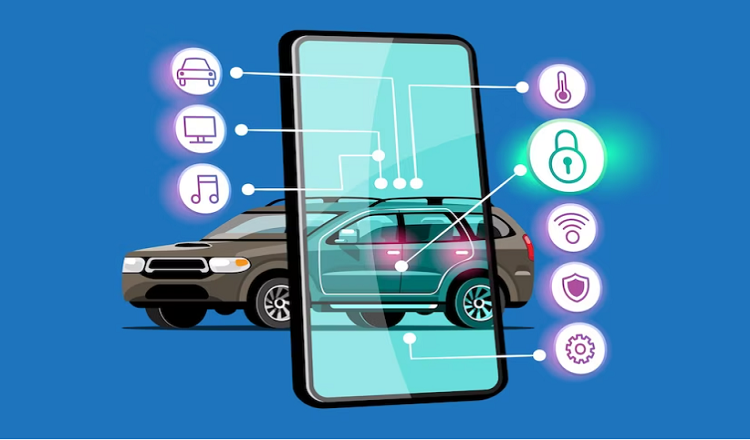Autonomous vehicles and smart cities have been a hot topic in recent years, as the world looks to the future of transportation and urban development. Autonomous vehicles, or self-driving cars, are vehicles that are equipped with advanced technology that enables them to operate without human intervention. On the other hand, smart cities are urban areas that leverage technology and data to improve the quality of life for their citizens and enhance sustainability.
The integration of autonomous vehicles into smart cities and infrastructure is a crucial step in the evolution of transportation. The purpose of this article is to explore the benefits and challenges of integrating autonomous vehicles into smart cities, and to provide insights into what cities and stakeholders can do to prepare for this integration. With autonomous vehicles promising improved safety, increased efficiency, and enhanced mobility options, it’s important to understand the role they play in the development of smart cities and how they can be integrated into the urban infrastructure. By doing so, we can ensure that the future of transportation is safe, sustainable, and accessible for everyone.
What are autonomous vehicles and how do they work?
Autonomous vehicles, or self-driving cars, are vehicles that are equipped with advanced technology that enables them to operate without human intervention. There are different levels of autonomy, ranging from partially autonomous vehicles that assist the driver to fully autonomous vehicles that can operate without any human input.
The technical details of autonomous vehicles involve the use of sensors, cameras, and algorithms to gather information about the environment and make decisions based on that information. Autonomous vehicles use this information to navigate roads, avoid obstacles, and make decisions about their speed and direction.
The advantages of autonomous vehicles include improved safety, reduced traffic congestion, and enhanced mobility options for people who may not be able to drive, such as the elderly or disabled. Autonomous vehicles can also help to reduce the environmental impact of transportation by improving fuel efficiency and reducing emissions. With the advancements in technology and the increasing demand for sustainable transportation solutions, autonomous vehicles are poised to play a significant role in the future of mobility.
The benefits of integrating autonomous vehicles into smart cities
The integration of autonomous vehicles into smart cities can bring many benefits to both citizens and urban areas. One of the primary benefits is improved safety, as autonomous vehicles are equipped with advanced technology that enables them to detect and respond to potential hazards on the road, reducing the risk of accidents.
Another benefit is increased efficiency and reduced traffic congestion, as autonomous vehicles can be programmed to make optimal decisions about their speed and direction, reducing traffic jams and improving the flow of traffic. Additionally, the use of autonomous vehicles can have a positive environmental impact by improving fuel efficiency and reducing emissions.
For citizens, the integration of autonomous vehicles can provide enhanced mobility options, especially for those who may not be able to drive, such as the elderly or disabled. This can lead to improved accessibility and reduced transportation costs, as autonomous vehicles can be summoned on demand, reducing the need for private car ownership. Overall, the integration of autonomous vehicles into smart cities has the potential to bring many positive changes to urban areas and improve the quality of life for citizens.
The challenges of integrating autonomous vehicles into smart cities
While the integration of autonomous vehicles into smart cities brings many potential benefits, there are also a number of challenges that must be addressed. One of the main challenges is the technical complexity of autonomous vehicles, as the technology is still in its early stages and requires ongoing development and improvement.
Another challenge is the lack of clear regulations for autonomous vehicles, as the technology is outpacing the ability of governments to establish clear guidelines and standards. There are also ethical and privacy concerns, as the use of autonomous vehicles raises questions about how data collected by these vehicles will be used and who will be responsible for potential accidents.
Another challenge is public perception and acceptance, as many people may be wary of using autonomous vehicles or may not fully understand how they work. Additionally, there are cost and infrastructure requirements that must be addressed, as the integration of autonomous vehicles into smart cities will require significant investments in new technology and infrastructure.
Overall, while the integration of autonomous vehicles into smart cities offers many potential benefits, it is important to address these challenges and ensure that the technology is developed and used in a responsible and ethical manner.
How smart cities can prepare for the integration of autonomous vehicles
To ensure a successful integration of autonomous vehicles into smart cities, there are several steps that cities can take to prepare. One important step is upgrading the infrastructure to support autonomous vehicles, including the development of dedicated lanes, traffic management systems, and communication networks.
Another key step is developing regulations and policies to govern autonomous vehicles, addressing issues such as liability, data privacy, and ethical considerations. Ensuring data privacy and security is also a crucial factor, as autonomous vehicles will generate and process vast amounts of data that must be protected from cyber threats.
To address public perception and acceptance, cities can develop public awareness and education programs, providing information about autonomous vehicles and how they work. Finally, cities can collaborate with technology and automobile companies, leveraging their expertise and resources to help bring autonomous vehicles to market in a safe and effective manner.
By taking these steps, smart cities can prepare for the integration of autonomous vehicles and ensure that they are well positioned to reap the many benefits of this exciting new technology.
Current examples and case studies of autonomous vehicle integration in smart cities
Autonomous vehicles are already being integrated into smart cities around the world, providing real-world examples of the potential benefits and challenges of this technology. Some of the cities that have already implemented autonomous vehicles include Singapore, Pittsburgh, and Amsterdam.
Success stories from these cities highlight the positive impact of autonomous vehicles on transportation efficiency and safety, as well as the potential to reduce traffic congestion and improve environmental sustainability. These experiences also provide valuable lessons for other cities looking to integrate autonomous vehicles into their infrastructure, including the importance of upgrading infrastructure, developing regulations, and addressing privacy and security concerns.
Overall, the current examples and case studies of autonomous vehicle integration in smart cities provide a glimpse into the future of transportation and highlight the opportunities and challenges of this technology. By examining these experiences, cities can better prepare for the integration of autonomous vehicles and ensure that this technology is integrated in a safe, efficient, and sustainable manner
Conclusion
In conclusion, the integration of autonomous vehicles into smart cities brings with it many potential benefits, such as improved safety, reduced traffic congestion, enhanced mobility options, and a better environmental impact. However, there are also significant challenges that must be addressed, such as the technical complexity of autonomous vehicles, the need for regulations and policies to govern their operation, and the need to ensure data privacy and security.
Smart cities can prepare for the integration of autonomous vehicles by upgrading their infrastructure, developing regulations and policies, and working with technology and automobile companies. It is important for cities to be proactive in their preparation, as the trend towards autonomous vehicles is likely to continue in the coming years.
As the technology continues to evolve and mature, the possibilities for the integration of autonomous vehicles into smart cities are exciting and limitless. However, it is important to remember that the integration of autonomous vehicles must be done in a way that is safe, secure, and ethical, and that considers the needs and concerns of all stakeholders, including citizens, businesses, and the environment. With careful planning and preparation, the integration of autonomous vehicles into smart cities has the potential to bring many positive changes and improve the quality of life for citizens.




